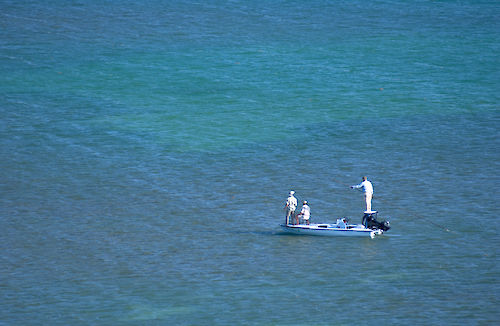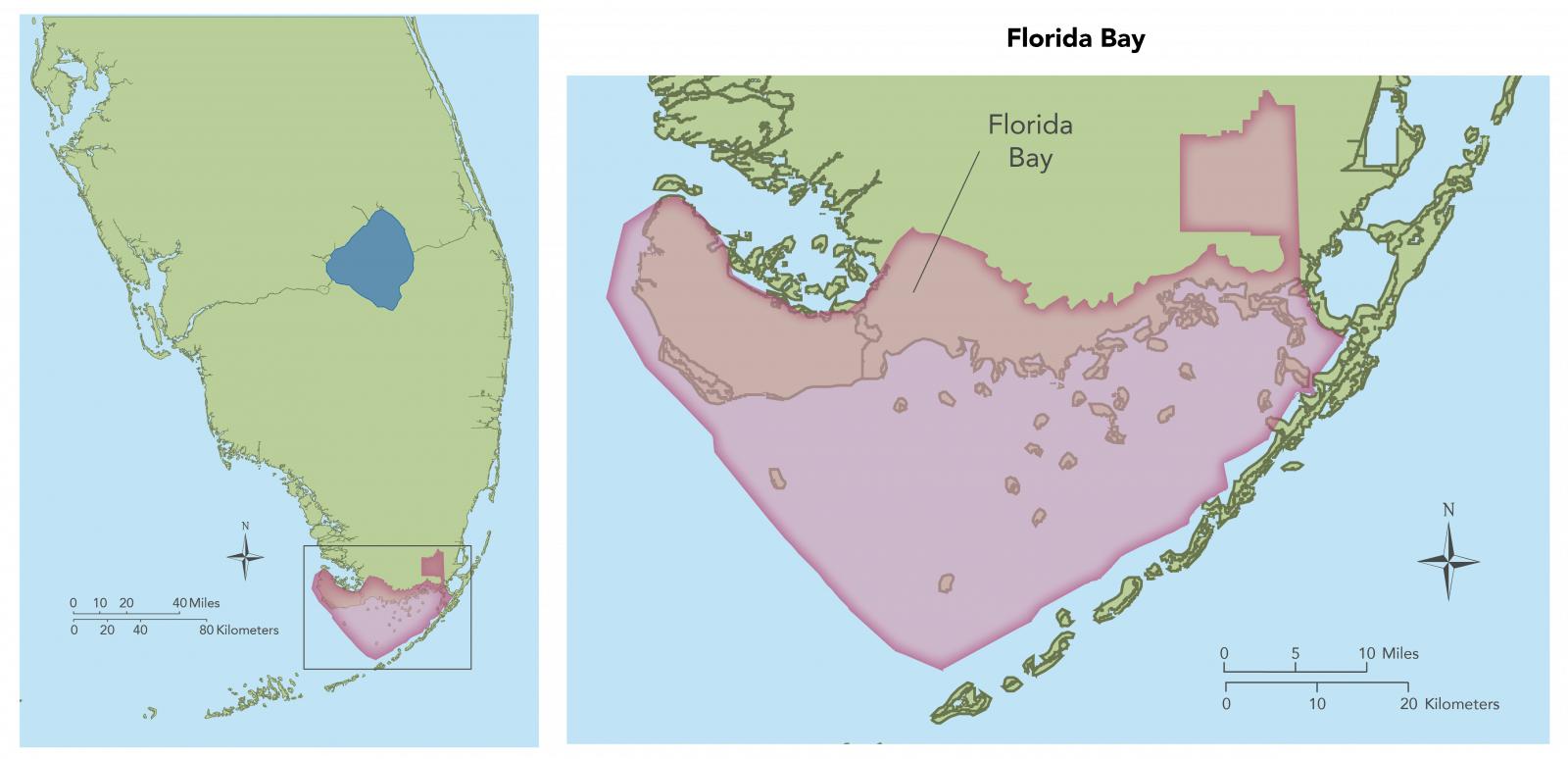Florida Bay

Florida Bay, located at the southern tip of the Florida peninsula, is characterized by a mosaic of mostly submerged mud banks, basins and small islands. Circulation is extremely complex with tidal influences significantly dampened in the interior of the bay. Vast seagrass meadows are found in Florida Bay, and various sponge species contribute significantly to Florida Bay’s benthic habitat. The seagrass and sponge habitats support a wide variety of fish and wildlife resources including commercially important spiny lobsters, stone crabs, and juvenile pink shrimp. They also provide important habitat for recreationally important finfish species like spotted seatrout, gray snapper and common snook. Seagrass die-offs and phytoplankton blooms in the bay since the 1980s have been attributed to long-term changes in the salinity regime driven by water management and nutrient loading. Large scale sponge die-offs and reduced abundance of gamefish like spotted seatrout are also attributed to reduced freshwater flow to Florida Bay.

